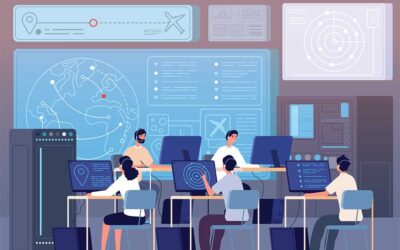The Anatomy of Conflict in HR
In any organization, conflict is as inevitable as morning coffee. But what makes each conflict unique? Understanding the anatomy of conflict is crucial for HR professionals tasked with maintaining a harmonious work environment.
The Many Faces of Conflict
Firstly, let’s delve into the types of conflicts that can arise in a workplace setting. Generally, conflicts can be categorized into three main types:
Interpersonal Conflicts – These are conflicts between individual employees. Often fueled by personality clashes, misunderstandings, or competition, interpersonal conflicts can be the most emotionally charged.
Intragroup Conflicts – These occur within a team or department. They can be due to differing opinions on how tasks should be completed, allocation of resources, or even clashes in team dynamics.
Intergroup Conflicts – These are conflicts between different teams or departments within an organization. Often, these arise from competition for limited resources, or differing objectives and performance metrics.
While these categories help in understanding the nature of a conflict, it’s often a blend of these types that HR professionals encounter.
The Price Tag of Unresolved Issues
Ignoring conflicts or letting them fester can have dire consequences. The costs aren’t just emotional; they’re financial too. According to a study by CPP Inc., U.S. employees spend approximately 2.8 hours per week dealing with conflict, amounting to around $359 billion in paid hours.
But the costs don’t end there. Unresolved conflicts can lead to:
- Decreased productivity
- Increased employee turnover
- Legal expenses
- Reputational damage
Each of these has a financial metric that can be quantified, making it essential for HR professionals to proactively manage conflicts rather than reactively deal with them.
The Hidden Costs
Beyond the financial implications, there are also non-monetary costs to consider. Employee morale takes a hit, leading to a toxic work environment. The ripple effects can be far-reaching, affecting not just the employees involved in the conflict but also those who witness it. The stress and tension can lead to health issues, further exacerbating the problem.
Understanding the anatomy of conflict is not just an academic exercise. It’s a necessity for any HR professional aiming to create a harmonious, productive work environment. By identifying the types of conflicts and understanding their potential costs, both financial and non-financial, organizations are better equipped to address and resolve issues before they escalate into major problems.
Your HR Toolkit for Conflict Resolution
Human Resources professionals find themselves at the forefront of conflict resolution. While conflicts are inevitable in any workplace, the manner in which they’re handled can make all the difference. This section delves into the various tools and strategies that HR professionals can employ to navigate the complex maze of conflict resolution.
Mediation Tools
When it comes to resolving conflicts, mediation remains a cornerstone. However, one size doesn’t fit all. Here are some of the most effective mediation techniques that HR professionals can utilize:
Facilitative Mediation: This involves an impartial mediator who facilitates a dialogue between the conflicting parties. The mediator doesn’t offer solutions but helps the parties communicate more effectively.
Evaluative Mediation: Unlike facilitative mediation, the mediator in this approach provides an evaluation of the conflict and suggests possible resolutions. This is often used in legal disputes or contractual disagreements.
Transformative Mediation: This is a more holistic approach where the mediator helps the parties not only resolve the issue at hand but also transform their relationship for the better.
Each of these techniques has its own set of advantages and disadvantages. The key is to match the technique to the specific type of conflict at hand.
Policies that Act as Preventive Shields
Prevention is better than cure, and nowhere is this truer than in conflict resolution. HR professionals can preempt a majority of conflicts by implementing robust policies. Here are some preventive measures that can act as shields:
Open-Door Policy: Encouraging employees to voice their concerns without fear of retribution can nip many conflicts in the bud.
Conflict Resolution Training: Regular training sessions can equip employees with the skills they need to resolve conflicts among themselves, reducing the need for HR intervention.
Clear Communication Channels: Ensuring that there are multiple, clear channels for communication can prevent misunderstandings that often lead to conflicts.
The Digital Transformation of Conflict Resolution
Conflict resolution is not confined to face-to-face meetings or lengthy email threads. Digital tools like AI-powered chatbots for initial grievance redressal, video conferencing tools for remote mediation, and online surveys to gauge employee satisfaction are becoming increasingly popular. These tools not only make the process more efficient but also add a layer of impartiality that is sometimes missing in human interactions.
The Role of Emotional Intelligence
While tools and policies are crucial, the importance of emotional intelligence in conflict resolution cannot be overstated. HR professionals need to be adept at reading emotional cues and understanding the underlying issues that may not be immediately apparent. This skill is often what turns a good HR professional into a great one.
Conflict resolution is not just a set of policies or techniques; it’s a blend of soft skills, technological tools, and preventive measures. By employing a multi-faceted approach, HR professionals can not only resolve conflicts but also foster a more harmonious work environment. After all, a conflict-free workplace is not just an HR goal; it’s an organizational success story waiting to happen.
Preventative Measures to Avoid Conflict in the Workplace
Human Resources isn’t just a mediator but a proactive peacekeeper. So, how can HR departments implement preventative measures to nip conflicts in the bud before they escalate?
The Power of Clear Communication
One of the most effective ways to prevent conflict is through clear and transparent communication. HR should ensure that all policies, procedures, and expectations are communicated clearly to all employees. This includes everything from the employee handbook to the company’s code of ethics. A well-informed employee is less likely to engage in actions that could lead to conflict.
The Role of Team Building
Team building isn’t just an excuse for a day out of the office; it’s a strategic move to foster better relationships among employees. Activities that require collaboration and problem-solving can help team members understand each other’s strengths and weaknesses. This mutual understanding can prevent misunderstandings and conflicts down the line.
Setting the Stage with Onboarding
The onboarding process is the first impression new hires get of the company culture. A comprehensive onboarding program that includes conflict resolution training can set the stage for a harmonious work environment. New hires should be made aware of the company’s policies on harassment, discrimination, and other potential sources of conflict.
The Magic of Open-Door Policies
An open-door policy isn’t just a buzzword; it’s a culture. Employees should feel comfortable approaching HR with their concerns and grievances. Knowing that there’s a confidential and non-judgmental space to air grievances can prevent minor issues from snowballing into major conflicts.
Regular Check-Ins and Feedback Loops
Scheduled one-on-one meetings between employees and their supervisors can serve as a preventative measure. These check-ins are opportunities for both parties to discuss any concerns or misunderstandings before they escalate. Feedback should be a two-way street, and HR should facilitate this dialogue.
The Safety Net of Employee Assistance Programs (EAPs)
Employee Assistance Programs offer a range of services, from mental health support to legal advice. These programs can be a safety net for employees going through personal issues that could potentially affect their work performance and relationships with colleagues.
Policy Audits and Updates
HR policies aren’t set in stone. They should be regularly reviewed and updated to adapt to the changing dynamics of the workplace. An outdated policy can be a ticking time bomb, leading to conflicts that could have been easily avoided.
Training Programs Tailored to Your Workforce
Generic training programs are a dime a dozen. What companies need are training programs tailored to the specific needs and challenges of their workforce. Whether it’s diversity training or workshops on effective communication, make sure the training material is relevant to your employees.
Preventative measures are an essential part of the HR toolkit for maintaining a harmonious work environment. By implementing these strategies, HR departments can play a proactive role in conflict prevention, ensuring a more cohesive and productive workforce. After all, a stitch in time saves nine.




